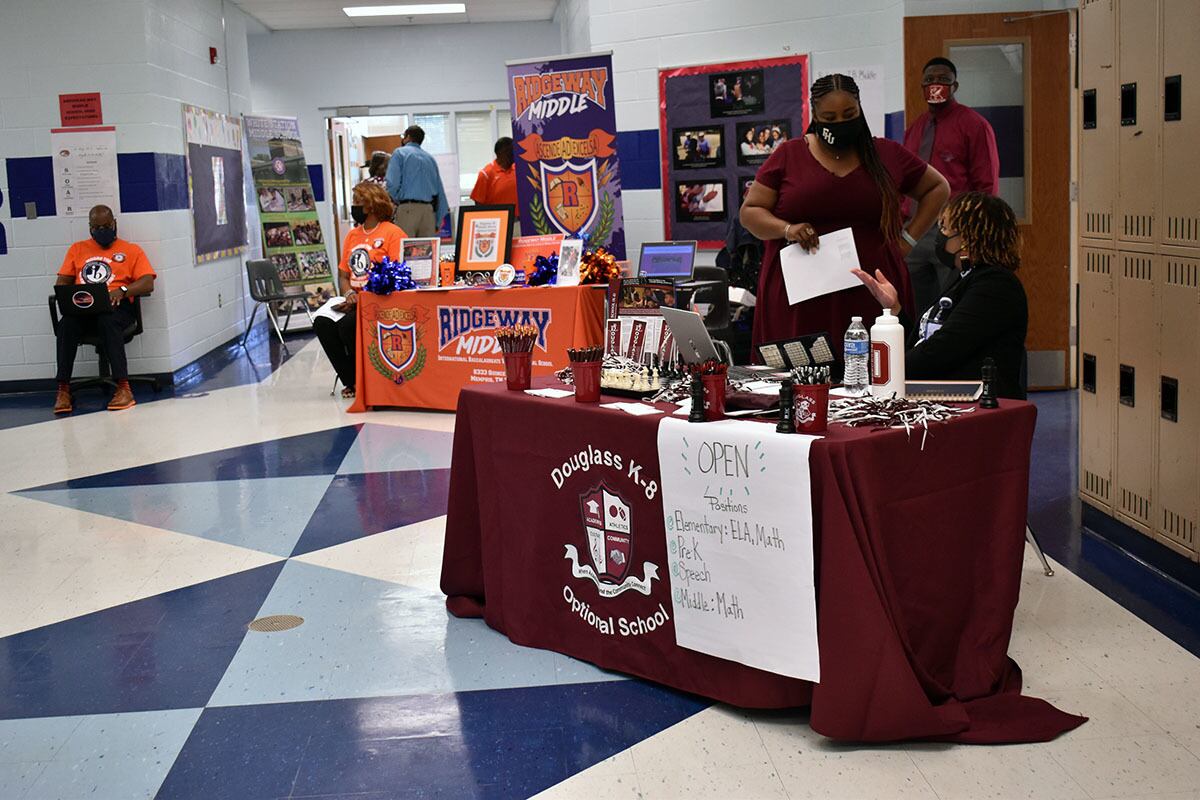A week into the fall semester of 2020, Rocio Agundis, a second grade teacher at Willow Oaks Elementary School, decided to call it quits.
The pandemic brought on challenges for Agundis, including a hectic adjustment to virtual learning, low attendance rates, technology issues, and missed instructional time. Dealing with these issues served as a breaking point for Agundis, who had been contemplating leaving the teaching profession since her first year in 2017.
Agundis is part of a growing group of young professionals who have left teaching. According to data from the University of Pennsylvania, 44% of new teachers leave the profession within five years. In many urban districts like Shelby County Schools, the turnover rate is even higher at more than 50%, according to a district report.
Local school leaders are hoping that higher pay, more classroom support, and aggressive recruiting will help bring in new hires who will stay.
“We are really excited about the work that we’ve done to really enhance our environment and increase our teacher retention,” said Yolanda Martin, chief of human resources. “Even in the midst of COVID, where people had opposing data, we’re fortunate.”
The hopeful sign “in the midst of COVID” was that the combined number of veteran and new hires staying with the district this year was higher than in previous years, district officials said. At the start of the 2021 school year, the district had 63 teacher vacancies, down from 125 vacancies at the same point the previous year, according to district records.
Martin credited this to initiatives like SCS Cares, a portal that outlines wellness initiatives provided by local agencies, the district, and its insurance provider.
The district is also hoping that better pay will attract and keep teachers. If the 2021-22 budget is approved in June, the starting salary for teachers will increase 7% to $45,965 and the maximum salary will increase nearly 16% to $84,445.
Agundis, who taught from fall 2017 to fall 2020, said that her salary was around $42,000. She added that she would spend as much as $1,200 of her own money each year on supplies and resources, which sometimes included clothes for her students.
“I felt like I was raising them,” said Agundis. “I was also their counselor and nurse, and then maybe I got time to teach.”
Agundis said she dealt with overfilled classrooms, heavy workload, and ever-changing curriculum. She often stayed up late and worked weekends to catch up on grading and planning for her large class. Agundis said she sometimes had more students than she had desks.
“I wanted to try to do five years,” she said.
“You kind of knew what you were getting yourself into. But thinking back, [college and the teacher residency program] do not prepare you. My friend group, who were all teachers — only two are still teachers out of six,” added Agundis, who now works in student affairs at a local university.
To recruit new teachers, the district is ramping up social media engagement and hosting several events, like a recent preview day where principals interviewed more than 200 applicants and extended 40 on-the-spot hiring recommendations.
When used in isolation, such recruitment strategies can increase instability in the profession by creating a “revolving door” that keeps “a supply of bodies going through that revolving door,” said education scholar Samantha Viano, who led a study on the factors that influence teacher turnover.
To get to the root of attrition and keep teachers in the school system, certain issues must be addressed, like salary, enforcement of discipline, consistent administrative support, school safety, small class sizes, and high-quality professional development, added Viano, a professor at George Mason University.
With the recent introduction of a new 10-year strategic plan called Reimagining 901, the district is hoping to tackle some of these issues by creating a new teacher preparation center at Melrose High School, adding more teaching assistants in kindergarten through second grade classrooms, and decreasing discipline problems through social and emotional learning programs.
“A lot of these processes happen at the school level,” Viano said. “If a principal is doing a great job in their school at having a consistent discipline system, supporting their teachers, and keeping the environment safe, this will incentivize teachers to stay there.”







